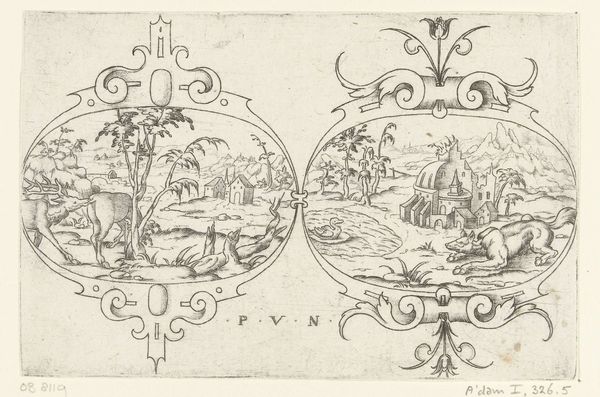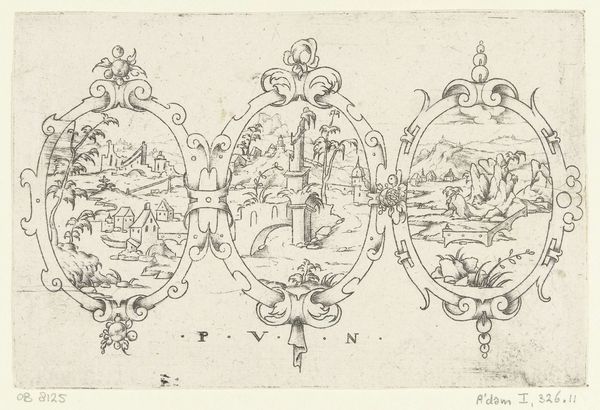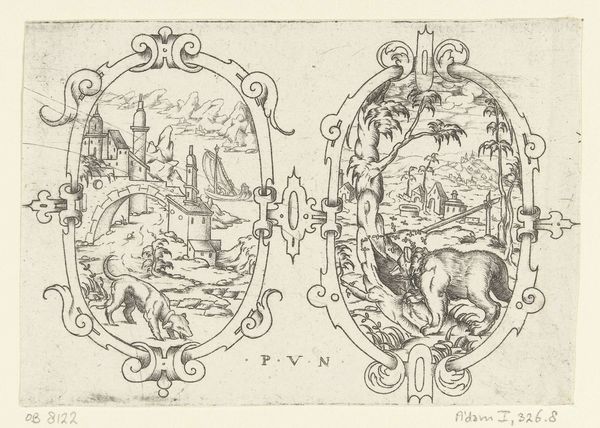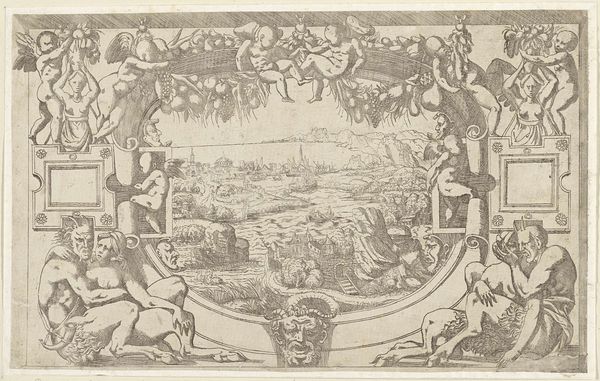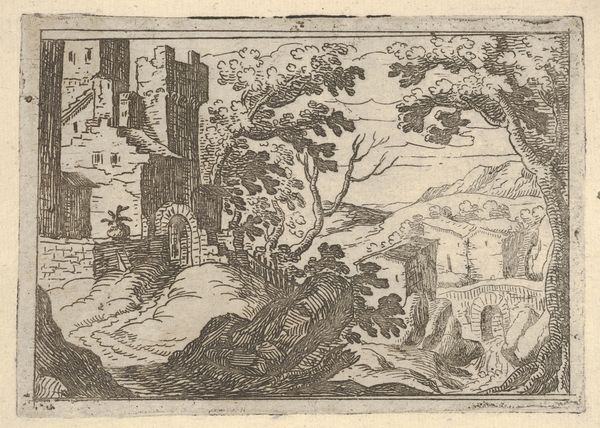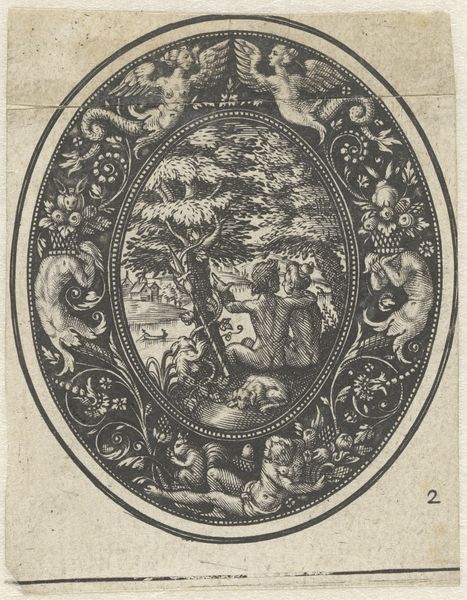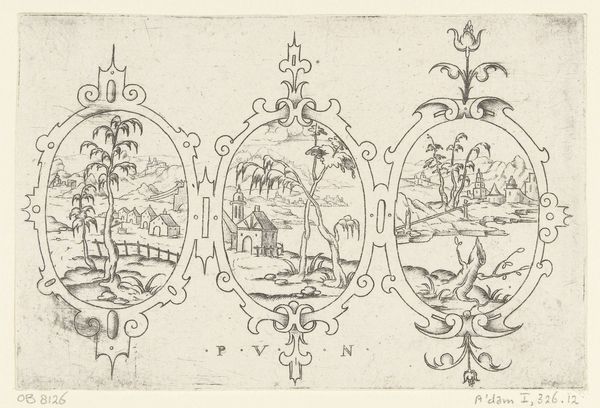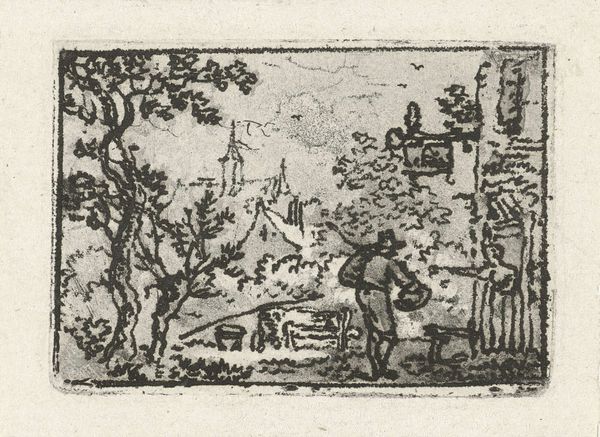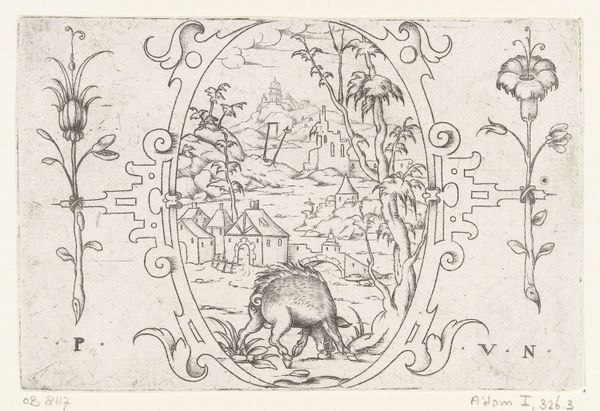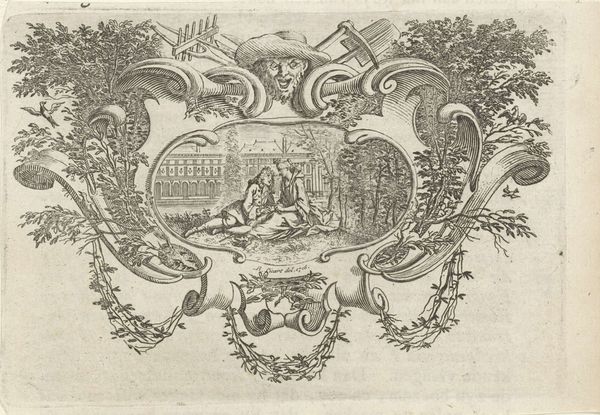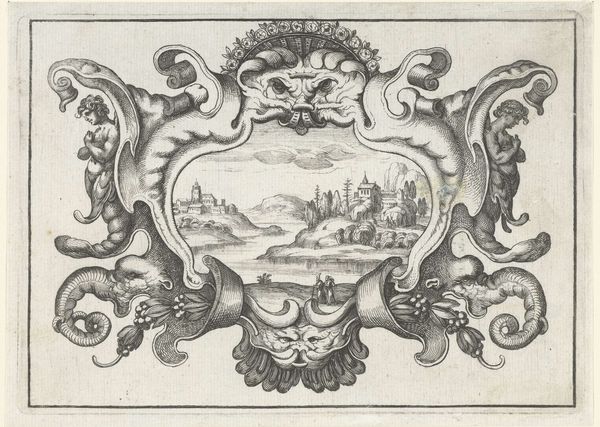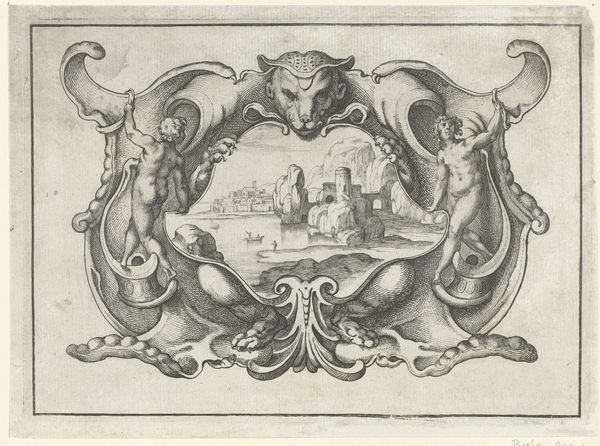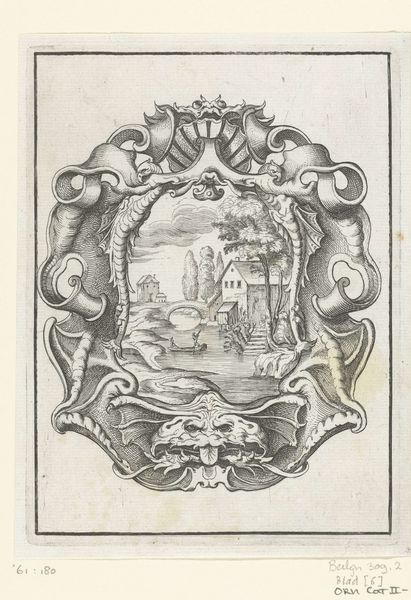
Twee ovalen, links met een vos die in een strop aan een boom hangt c. 17th century
0:00
0:00
pauldejongeflindt
Rijksmuseum
print, etching, engraving
#
baroque
# print
#
pen illustration
#
pen sketch
#
etching
#
old engraving style
#
landscape
#
figuration
#
pen-ink sketch
#
line
#
pen work
#
engraving
Dimensions: height 100 mm, width 145 mm
Copyright: Rijks Museum: Open Domain
Curator: Here we have an etching from around the 17th century, residing in the Rijksmuseum, called "Twee ovalen, links met een vos die in een strop aan een boom hangt," or "Two ovals, with a fox hanging in a noose from a tree on the left." It's attributed to Paul(de Jonge) Flindt. Editor: Right off the bat, it’s giving me a very…brooding storybook vibe? Darkly whimsical. Two scenes, almost like stages in a fable, meticulously framed. I feel drawn into a cautionary tale! Curator: The artist employs techniques characteristic of baroque prints. Note the linear quality and dense cross-hatching to achieve tonal variation. Also observe how printmaking allows for the broad dissemination of moral or political narratives. Editor: Oh, absolutely, that fox image… it’s quite stark, isn't it? But within that scene, you see the bridge, the suggestion of a landscape. It makes me wonder, what did this fox DO? Why is it presented as a warning? Is this some kind of commentary on power structures of the time? Or is it pointing to how society uses scapegoats? Curator: Examining it as a material object, consider how the print would have been consumed. Who was the intended audience, and how might they have interpreted such symbolism within their daily lives and routines of seeing. Print served as a popular visual medium! Editor: Right, were people sticking these prints up on their walls as grim reminders? Or using them as some kind of twisted decoration. As a storyteller, it raises a host of questions that only a great piece of art can do. There is something slightly mischievous too, despite the grave subject matter. That almost playful level of detail invites you in for a closer look. Curator: Well, beyond narrative, consider the function. Was it produced singly or within a larger suite or book? Did it act as a kind of visual proverb readily grasped and internalized by the emerging mercantile classes. Editor: Yes! It makes you question, which in my mind is precisely what art should do! Even a rather morbid, very old one like this. Curator: Indeed, seeing such artifacts prompts one to imagine and better comprehend their function within historical socio-economic landscapes. Editor: Yes, exactly! Art provides this almost psychic conduit, lets you connect across the centuries and really feel a past time! That poor fox notwithstanding.
Comments
No comments
Be the first to comment and join the conversation on the ultimate creative platform.
